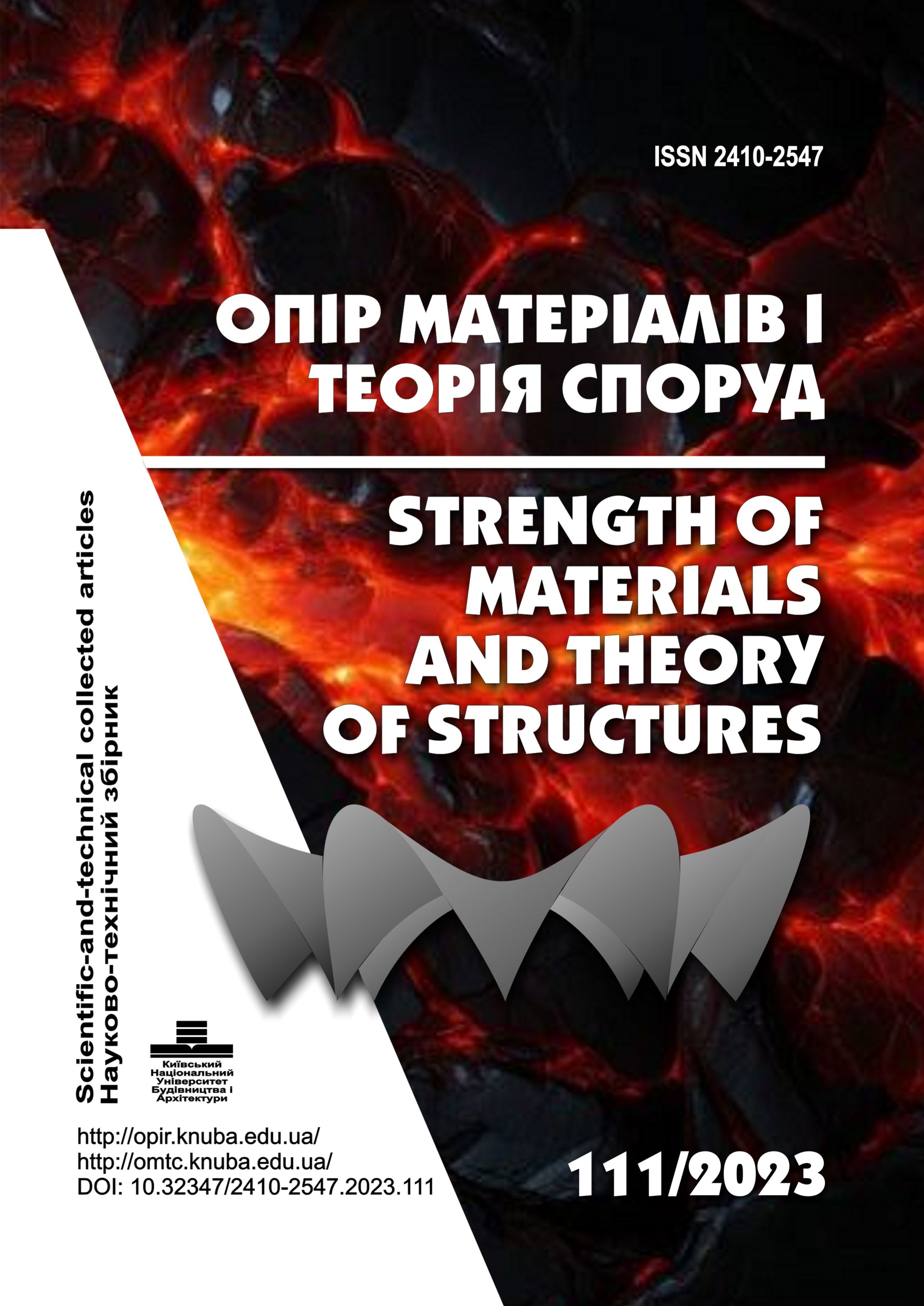Methods of calculation and engineering protection of critical infrastructure objects and other strategic facilities against long-range projectiles
DOI:
https://doi.org/10.32347/2410-2547.2023.111.155-171Keywords:
engineering protection, critical infrastructure objects, damage, explosion, building structuresAbstract
Relevance. One of the key areas of russia's military operations against Ukraine is the destruction of critical infrastructure objects (CIO) of strategic importance. The main types of enemy means for air strikes on CIO are air-launched, ground-launched and water-launched missiles, as well as barrage munitions. The vast majority of the CIO were built in Ukraine above ground, without any engineering structural protection systems to counter air threats, explosions or other impacts related to military operations. The importance of developing the most effective methods of engineering structural protection of the CIO from various types of projectiles as soon as possible was demonstrated by the experience of Ukraine's war with russia, in particular, the analysis of the significant impact of damage to the CIO in the energy sector. At present, Ukraine has a certain lack of regulatory data for designing reliable protective structures for CIO. The aim of this work is to develop a regulatory base for making calculations for the possible impact of various types of forceful effects from air strikes, terrorist attacks, etc. when designing the CIO and other strategic facilities. Currently, the issue of organising the defence of critical infrastructure and other strategic objects is being systematically addressed on the basis of the "Country-Fortress" principle, which provides for the organisation of echeloned air defence combined with comprehensive civil and engineering defence measures. In addition, it is necessary to provide for the reliable protection of existing facilities, taking into account the hazards and threats of today. The process of reducing the risks of damage to the CIO involves identifying threats, their comprehensive assessment, developing measures to reduce threats and their prompt implementation, followed by an assessment of the measures effectiveness. Results. The presented methods of risk assessment of critical infrastructure damage, methods of their engineering and analytical calculations and methods of engineering structural protection against ammunition of various types allow developing an effective integrated system of protection of strategically important objects. The article deals with both the protection of existing facilities and the design of new ones, taking into account the requirements for engineering protection and civil defence.
References
Bobro D.H. Vyznachennia kryteriiv otsinky ta zahrozy krytychnii infrastrukturi (Determination of assessment criteria and threats to critical infrastructure.) - Stratehichni priorytety. – Seriia «Ekon omika». – 2015. – № 4 (37). – P. 83-93.
Zelena knyha z pytan zakhystu krytychnoi infrastruktury v Ukraini (Green book on critical infrastructure protection in Ukraine) : zb. materialiv mizhnar. ekspert. narad / Uporiad. D.S. Biriukov, S.I Kondratov ; za zah. red. O.M. Sukhodoli. – K. : NISD, 2016. – 176 p.
Kotsiuruba V.I., Kryvtsun V.I., Kolos O.I. Sukupnist pokaznykiv efektyvnosti nevybukhovykh ta kombinovanykh inzhenernykh zahorodzhen dlia prykryttia vazhlyvykh obiektiv (A set of performance indicators of non-explosive and combined engineering barriers for covering important objects ) - Zbirnyk naukovykh prats Tsentralnoho naukovo-doslidnoho instytutu Zbroinykh Syl Ukrainy. Kyiv, 2019. Vyp. 3(74). Р. 141–147.
Krishna Chaitanya M. Progressive collapse of structures - International Journal of Mechanical Civil and Control Engineering. – Vengatapathy: International Institute of Scientific Research and technology, 2015. – p. 23-29, Likely Shahed-136 UAS Technical Report/ FIT UK secret rel Ukraine, - 10 p.
Kotsiuruba V. I., Bilyk A. S., Veretnov A. O., Haidarly H.S., Borta R.M., Tertyshnyi B.I. Metodyka rozrakhunkiv ta obgruntuvannia vymoh do inzhenernoho zakhystu obiektiv krytychnoi infrastruktury vid BpLA typu barazhuiuchyi boieprypas (Method of calculations and substantiation of requirements for engineering protection of critical infrastructure objects from UAVs of the barrage type) - Opir materialiv i teoriia sporud. – 2022. – № 109. – Р.164–183.
Wen, H.M., Yang Y. A note on the deep penetration of projectiles into concrete - International Journal of Impact Engineering – 2014 – №66, рр. 1–4. https://doi.org/10.1016/j.ijimpeng.2013.11.008.
Tamer Elshenawy, M. Gaber Zaky, Ahmed Elbeih Experimental and numerical studies of fragmentation shells filled with advanced HMX-plastic explosive compared to various explosive charges - Brazilian Journal of Chemical Engineering (2023) 40:481–492. https://doi.org/10.1007/s43153-022-00267-x
D. Cormie, G. Mays, S. Smith, Blast Effects on Buildings, Third edition, London, 2020, ISBN 978-0-7277-6147-7
Skliarov I.O., Skliarova T.S. Synerhiia vlastyvostei stali ta derevyny v konstuktsiiakh metaloderevianykh dvotavriv z hofrovanoiu stinkoiu (Synergy of the properties of steel and wood in the constructions of metal-wood I-beams with a corrugated wall) - Budivelni konstruktsii. Teoriia i praktyka– Vyp. 11. – KNUBA, 2022. – Р. 94-103. https://doi.org/10.32347/2522-4182.11.2022.94-103
Mykhailovskyi D. V. Rozrakhunok panelnykh budynkiv z poperechno-kleienoi derevyny (Calculation of panel building from cross-laminated timber): Monohrafiia. – Kyiv: Karavela, 2022. – 220 р.
Denys Mykhailovskyi Method of calculation of panel buildings from cross-laminated timber / Strength of Materials and Theory of Structures. – Kyiv: KNUBA, 2021. – Issue 107. – P.75 – 88.
Downloads
Published
Issue
Section
License

This work is licensed under a Creative Commons Attribution 4.0 International License.
Authors retain copyright and grant the journal right of first publication with the work simultaneously licensed under a Creative Commons Attribution License that allows others to share the work with an acknowledgement of the work's authorship and initial publication in this journal.

